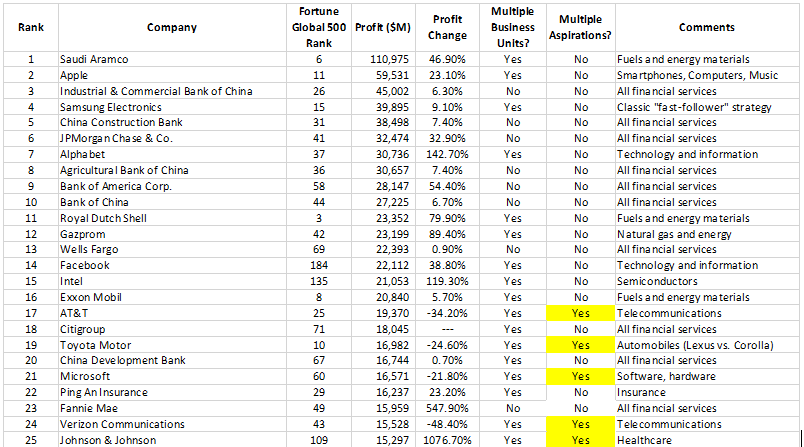As the lead facilitator of hundreds of Business Simulation-Centric Business Acumen workshops I  answer dozens of questions a week from our participants about the critical elements of learning around business strategy and financial management.
answer dozens of questions a week from our participants about the critical elements of learning around business strategy and financial management.
Over the past year, I have noticed a significant change in the perceptions of our participants when it comes to practical strategic thinking and execution of strategy through leadership. The dialogue has grown from just a few thoughtful questions to strong arguments and outright disagreements about what it takes for a business to be successful in today’s complex global business environment.
The primary issue being debated is the “Winning Aspiration” of a business. The term Winning Aspiration comes from an excellent business strategy book called “Playing to Win: How Strategy Really Works” by AG Lafley and Roger L. Martin. The book presents a practical framework of strategic thinking and execution that compliments and supports previously endorsed models by Porter (The Five Forces Model) and Tracey & Wiersema (The Discipline of Market Leaders). In the book, Lafley and Martin suggest that a clear and understandable winning aspiration is the mission – or value proposition - the company offers to its customers. But in complex organizations that have multiple business units (BUs) the question becomes: “Does the overall business have to have one singular wining aspiration that all business units follow, or can each business unit have their own winning aspiration that is different than the others?”
As I mentioned, the debate has become intense with many of our current participants thinking it’s a great idea to have different winning aspirations even down to a brand level within a company’s overall product portfolio.
It’s an interesting question worth exploring to discover the best practices and impacts.
The best way to answer the question is to review and analyze the facts. Let’s take a look at the top 25 most profitable businesses on the planet to discover whether or not they have multiple business units and multiple winning aspirations.

In compiling this list, I made subjective judgments on the multiple aspirations. The criteria I used was the company has distinct different business units with distinct different aspirations. For example, the easiest one is Toyota. The core business is branded under Toyota and sells automobiles such as the Corolla. The strategy of core Toyota is providing reasonable quality cars at competitive value pricing. Toyota also owns the Lexus business line and the aspiration of Lexus is premium, higher quality, higher priced cars. It’s also important to note that at one point Toyota also had the Scion brand which represented the complete opposite approach with a winning aspiration of low priced, lower quality cars.
What the data tells us
- Only 20% of the top 25 most profitable companies have multiple aspirations
- None of the top 10 most profitable companies have multiple aspirations
- Companies that have multiple aspirations like AT&T, Toyota, Microsoft, Verizon, and J&J have all had significant challenges in execution and have seen their value decrease over the past 10 years
Activist investors and many analysts look at these and other conglomerate businesses and suggest that there is too much value “locked up” in multiple business units with differing aspirations. They believe this creates confusion across the value chain and they strongly urge these sorts of organizations to divest and / or spin off these business units into separate entities that can be much more focused on long-term value creation.
Conclusions and Impacts on Business Leadership
This data and review supports what we see when we run competitive business simulation workshops. Time and time again, when leaders of our simulated companies try to have multiple aspirations they end up in the worst possible place which we call “stuck in the middle.” Worse yet, having multiple aspirations within one large company hurts the ability of different functions to focus on what they do best. For example, if a company has shared services like R&D and Marketing for efficiencies, they lose focus on how to align to the right aspiration.
The trend has been and will continue to be specific focus that allows for clear execution to fulfill the winning aspiration.




